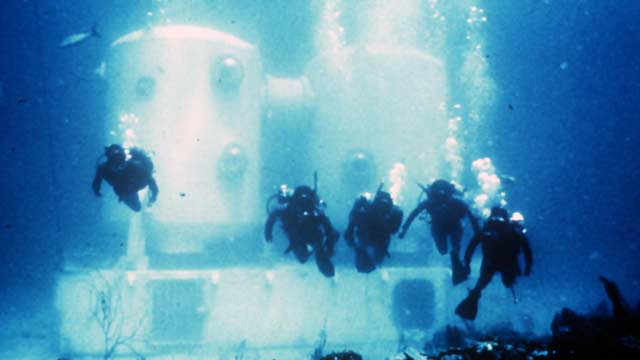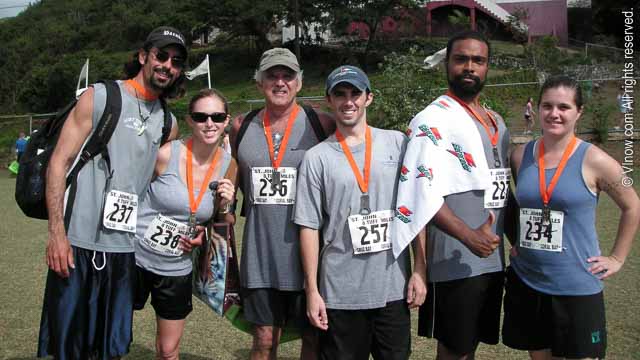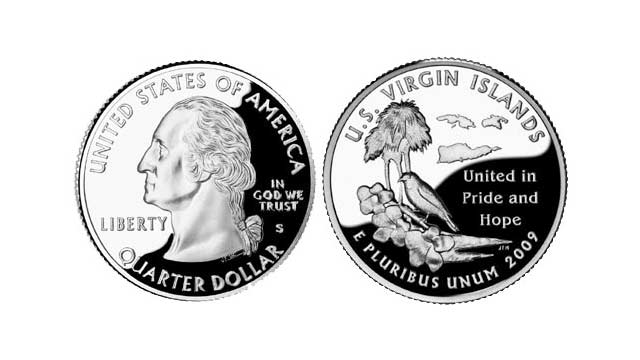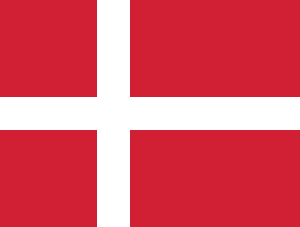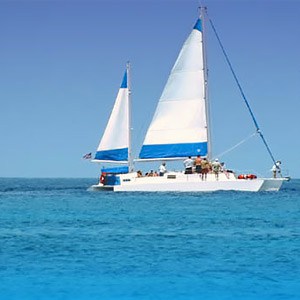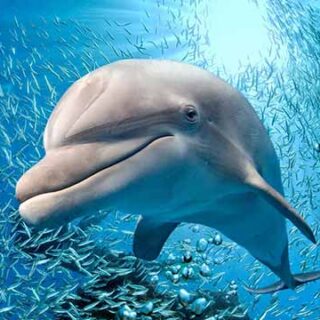On the morning of May 15, 2009, the 42-foot Blast, one of Cruz Bay Watersports’ fleet of custom vessels, departed on a historical journey. The destination was Lameshur Bay, St. John. The reunion of the guests on the Blast was to commemorate the Atlantis Seafloor Colony Project; undersea experiments that took place in 1969 and 1970 at the Tektite I and II sites.
The dive team on board the Blast would make Jacques Cousteau envious. Buzz Aldrin, aquanaut and astronaut, and 24 other companions once again explored the remains of the undersea colony established 40 years ago. Scott Carpenter, another name synonymous with sea and space, was there for the reunion. Carpenter was the first to set a record in the Colony’s SEALAB and was one of the original seven astronauts on the Mercury space shuttle.
The members of the crew aboard the Blast included, Captain Justin Holt, Captain James Gill, Michael Tyzbir and Adrienne Katz, all PADI dive instructors. They reported that there “was no describing the pride and excitement for the opportunity to host the group” and they were grateful at being part of this historic reunion.
Earlier in the year, on February 15, 2009, another reunion took place. This one included aquanauts Conrad Mahnken and Ed Clifton, members of the Tektite I team, along with Project Manager Jim Miller. A presentation took place and at the former base camp for the Tektite projects, what is now the V.I. Environmental Resource Station (VIERS) compound, a small museum was officially opened. It is filled with information about Tektite.
What was Tektite?
Tektite was the first nationally sponsored scientists-in-the-sea program. It was conducted in 1969 and 1970 and was a cooperative government + industry + university effort. The Office of U.S. Naval Research coordinated Tektite I, and the U.S. Department of the Interior with funding from NASA coordinated Tektite II. The purposes were to conduct extensive research in marine science, human behavior and human biology. Additionally NASA was interested in psychological studies of the scientific teams since they were working in closed environments, similar to that of spacecraft.
The Tektite habitat was designed and constructed by General Electric Company. From the outside it looked like a pair of silos, two white cylinders each just under 20 feet tall, joined by a flexible tunnel. The habitat was placed fifty feet below the water’s surface at Lameshur Bay, St. John. Multiple cords connected the habitat to the shore for air, water and electricity. Inside was a combination of laboratory and apartment. There were four circular rooms, two in each cylinder and each about 13 feet in diameter. The main entrance was in the floor of the lowest level; the ‘wet room’ where divers entered and exited the habitat through an opening in the floor – a submerged ladder led down into the sea. A suitable pressure was maintained to keep water from rising through the entry. There was a fully equipped kitchen, freezer for food storage and small private bathroom. There was also a dry laboratory, library, bunks and cots for sleeping, carpeted floors, television and radio – these all contributed to the livability of the habitat.
Scientists were selected as Tektite aquanauts primarily on research proposals submitted, in addition to health and diving skills. In Tektite I four men, Ed Clifton, Conrad Mahnken, Richard Waller and John VanDerwalker, lived in the Tektite Habitat for 60 days. They descended on February 15th, 1969 and resurfaced on April 15, 1969, after spending 19 hours and 22 minutes in a decompression chamber. They were constantly monitored by cameras and microphones. Their heart rate was monitored, so were their sleep patterns, mood and behavior. During the project the men set a world record for time spent underwater, breaking the previous record of 30 days which had been held by astronaut Scott Carpenter in the Sea Lab II habitat.
Tektite II comprised of 11 missions lasting 10-20 days with four scientists and an engineer on each mission. Mission 6 was historic in that it was the first team of women to conduct research of this type in the U.S. The women’s team included Sylvia Earle, Renate True, Ann Hartline, Alina Szmant and Margaret Ann Lucas. The Tektite II missions included numerous environmental and ecological studies.
Over the course of the project 62 scientist and engineers lived and worked beneath the sea. On land there were teams of scientists, professors, students and other participants observing and studying the aquanauts. There were also team members taking care of important behind the scenes matters like safety, food, water, communications and other facets of the project. It was a big project. The Tektite I & II projects resulted in hours of research, documenting marine life and discoveries!
If you plan to visit Lameshur Bay while on St. John, include some time to stop by VIERS to visit the small Tektite Underwater Habitat Museum and learn more about this fascinating project!

